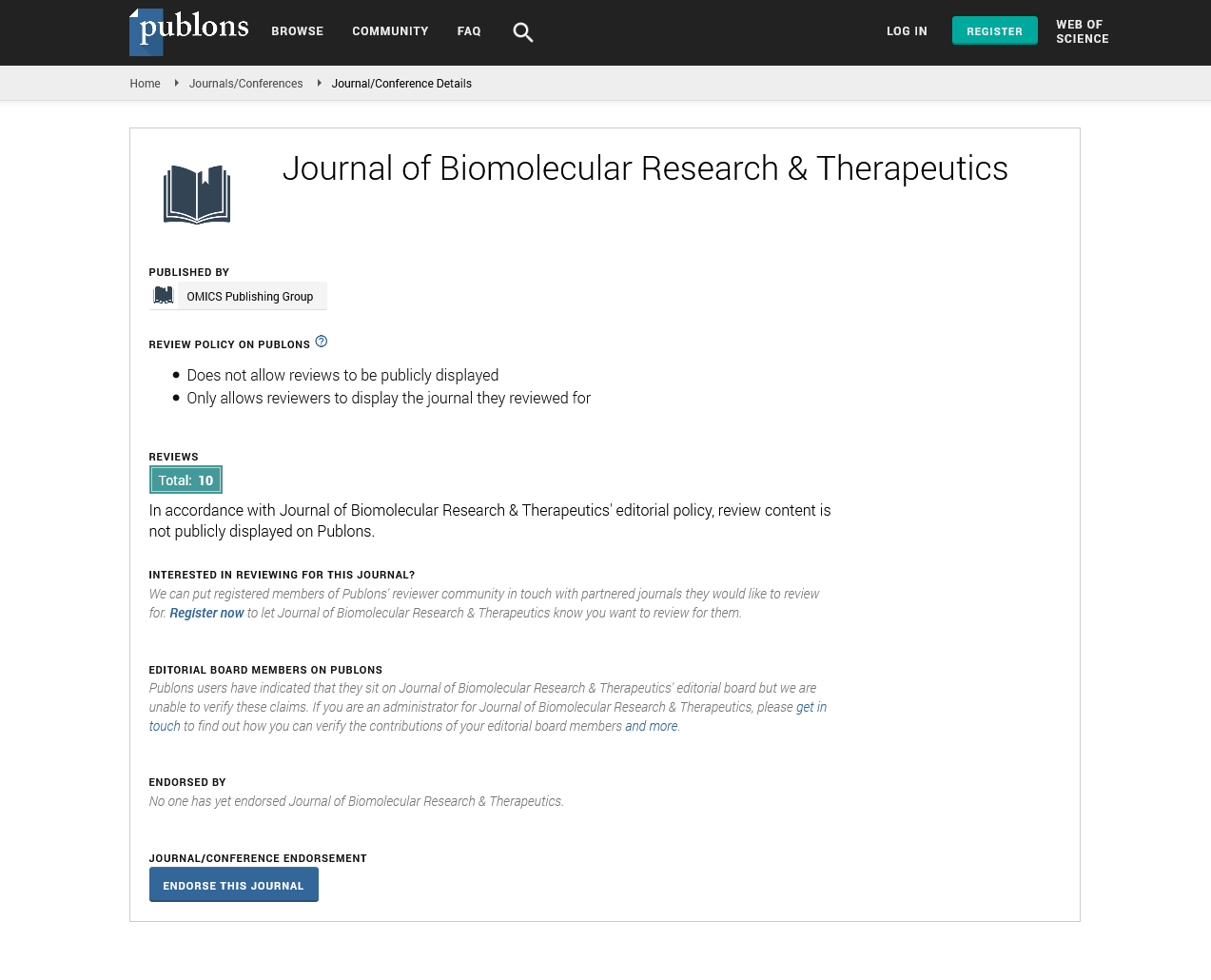Indexed In
- Open J Gate
- Genamics JournalSeek
- ResearchBible
- Electronic Journals Library
- RefSeek
- Hamdard University
- EBSCO A-Z
- OCLC- WorldCat
- SWB online catalog
- Virtual Library of Biology (vifabio)
- Publons
- Euro Pub
- Google Scholar
Useful Links
Share This Page
Journal Flyer

Open Access Journals
- Agri and Aquaculture
- Biochemistry
- Bioinformatics & Systems Biology
- Business & Management
- Chemistry
- Clinical Sciences
- Engineering
- Food & Nutrition
- General Science
- Genetics & Molecular Biology
- Immunology & Microbiology
- Medical Sciences
- Neuroscience & Psychology
- Nursing & Health Care
- Pharmaceutical Sciences
Editorial - (2021) Volume 10, Issue 10
Editorial Note on Normal Mode Analysis of Biomolecular Structures
Bindu Madhavi*Received: 20-Oct-2021 Published: 30-Oct-2021, DOI: 10.35248/2167-7956.21.10.184
Editorial
A Normal Mode Analysis (NMA) of biomolecular structures and useful systems of film proteins was considered. Typical mode investigation gives data on the harmony modes open to a framework, accepting that the framework is balanced out by symphonious possibilities. A striking element of NMA and other PCAs of biomolecular structures is the noticed strength of the worldwide modes to subtleties in nuclear directions or explicit interatomic communications. A significant purpose for the widening acknowledgment of NMA as an apparatus for investigating practical movements of proteins is the perception that worldwide modes explained by NMA bear useful importance. Layer proteins are arranged into two general gatherings, basic film proteins (IMPs) and fringe film proteins. The organic capacity of numerous film proteins includes a transient change in structure, with the related cycles normally spreading over a wide scope of time scales. The capacity of film proteins includes numerous other explicit and unobtrusive communications that can't be concentrated by CG models and NMA.
The unique recreation of macromolecular frameworks with naturally pertinent sizes and time scales is basic for understanding macromolecular capacity. In this unique situation, ordinary mode examination (NMA) approximates the complex dynamical conduct of a macromolecule as a basic arrangement of symphonious oscillators vibrating around a given harmony adaptation. During this time, an abundance of proof has gathered to help NMA as a fruitful apparatus for recreating macromolecular movements at broadened length scales. Today, NMA joined with coarse-grained portrayals has turned into an effective option in contrast to subatomic elements reproductions for considering the lethargic and large-amplitude movements of macromolecular machines. Intriguing experiences into these frameworks can be gotten rapidly with NMA to describe their adaptability, to foresee the bearings of their aggregate conformational changes, or to help in the understanding of exploratory primary information. The as of late created strategies and utilizations of NMA along with a presentation of the basic hypothesis will be momentarily evaluated here.
Ongoing advances in sequencing and underlying genomics show that the sanctioned arrangement to-structure-to-work worldview is deficient for understanding and controlling the systems of biomolecular collaborations and capacities. Since sub-atomic designs are dynamic as opposed to static, data in regards to their elements is needed to set up the connection among construction and capacity. Typical mode investigation (NMA) has reappeared lately as an amazing strategy for clarifying the construction encoded elements of biomolecules. Notwithstanding, its helpfulness in underlying science has been taken advantage of as of late, after the perception that the aggregate movements anticipated by NMA for collapsed structures are profoundly hearty and bear utilitarian importance. Albeit the genuine movements of macromolecules in arrangement are exceptionally intricate, including changes among multitudinous conformities, the accomplishment of NMA pivots upon the way that movements close to local state conditions are a lot more straightforward and more vigorous. Underlying changes are overwhelmed by the between buildup contact geography of the collapsed state, suggesting that the most likely distortions are those requiring the littlest energy rising in the multidimensional energy scene.
Citation: Madhavi B (2021) Editorial Note on Normal Mode Analysis of Biomolecular Structures. J Biomol Res Ther. 10:184.
Copyright: © 2021 Madhavi B. This is an open-access article distributed under the terms of the Creative Commons Attribution License, which permits unrestricted use, distribution, and reproduction in any medium, provided the original author and source are credited.

